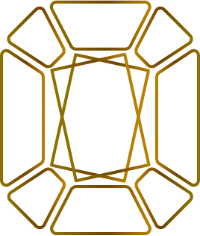On beauty: can plain English ever be beautiful?
- Justine Dixon Cooper
- Jun 13, 2023
- 4 min read
Updated: Jul 21, 2023

Over the centuries, much has been written on the nature of beauty – what it is and what it means to a society. Philosophers, mathematicians, poets and Vogue editors alike have long sought to distil its essence – in theories, formulas and double-page spreads.
In the plain language field, we don’t talk about beauty very often. “Plain” is, for many, the opposite of “beautiful”. The Macquarie Dictionary gives definitions for the former relating to clarity and simplicity. No quibbles there.
But then we come to the devastating censure of:
7. not beautiful; unattractive
It would be a real shame to write plain English off like this.
Although notions of beauty shift with each generation, the years of deliberation and debate have produced some common principles to underpin the judgement that something is beautiful. And you might be surprised at how these principles are reflected in plain English.
Yes, it probably seems a bit of a stretch to suggest a 50-page legal agreement could be beautiful through any lens. But I’m going to have a go at convincing you with just 3 principles for starters:
1. Proportions
2. Patterns
3. Radiance
We’ll see where they take us. I’ll be avoiding the obvious discussion of visual design, so it might not be where you think.
1 Proportions
Let’s look first at the golden ratio, a geometric equation linked to physical beauty. If an object’s features match the ratio, they are thought to be in harmonious proportion.

It’s a theory that commonly sees rectangles superimposed on buildings or faces in the hope of measuring their proportions – and thus their aesthetic appeal – with precision.
Honestly, I’m not quite convinced that a few rectangles can decide whether the Taj Mahal is more or less beautiful than the Parthenon. But I do understand the focus on proportions.
We are trained from an early age to appreciate things that are “in proportion” – from architecture to art to our emotional responses.
It’s interesting that our expectations are no different for a written communication. And plain English encourages us to think about scale and symmetry when we’re structuring text.
PLAIN, the international plain language association, gives 3 top ways to refine your structure, one of which is “dividing each section into roughly equal chunks”.
If your sections are in proportion, with each a similar length to the one before it, readers will more easily move through the text. On the other hand, an eclectic mix of very long and very short sections might leave them feeling like they’re stuck in a maze.
Beauty level: basic.
2 Patterns
The golden ratio is closely linked to the Fibonacci sequence, which brings us to our next principle for achieving beauty: patterns.

The sequence, named after mathematician Leonardo of Pisa, maps the recurring spiral pattern in nature that makes pine cones and daisies so pleasing to the eye.
Again, patterns are something we’re all trained to spot as children. (Trust me – I’ve homeschooled a kindergartener during a Covid-19 lockdown.) They help us make sense of the world.
In a written communication, readers will be on the lookout for patterns that mark where they are and where they are going next.
I’m not suggesting you should structure your text in a spiral – whatever that might look like – but you should find a pattern to suit your content.
For example, if your readers see that every chapter has a summary and 4 or 5 sections, they’ll start to feel comfortable working their way through the content. But if chapter summaries come and go at will, and sections range in number from 1 to 23, readers won’t have a strong pattern to follow.
Beauty level: intermediate.
3 Radiance
Now we come to the more ethereal principle of radiance, and we move from the structures you use to the words themselves.

Radiance is something you might judge a diamond’s beauty by. There’s even a type of cut known as the “radiant cut” that is thought to be one of the most exquisite.
But rather than assessing a physical sparkle or glow, I’m interested in the intellectual version.
Theologians like St Thomas of Aquinas and St John of Damascus wrote about intellectual light and splendour relating to the “Word of God”. Beauty comes when wisdom and truth flow into a person’s mind. No matter your stance on religion, it’s an idea we can draw from.
We all know that plain language is about conveying your wisdom in the clearest possible way: familiar words, active sentences and the like.
But how about we look beyond basic mechanical fixes like cutting back a long sentence? What are these fixes really trying to achieve?
For me, it’s human connection and understanding. And that’s where plain English’s true radiance comes to the fore. It might be a little miserly with words, but it’s generous in every other way. It engages rather than distances. It welcomes rather than excludes.
If you switch your vocab and language to match your readers’ knowledge and capability, you will start to build real connections with them. If you put their needs above your own, they will have a much higher chance of understanding your message.
Beauty level: advanced.
If you need any help beautifying your content with plain English, please get in touch.

Comments